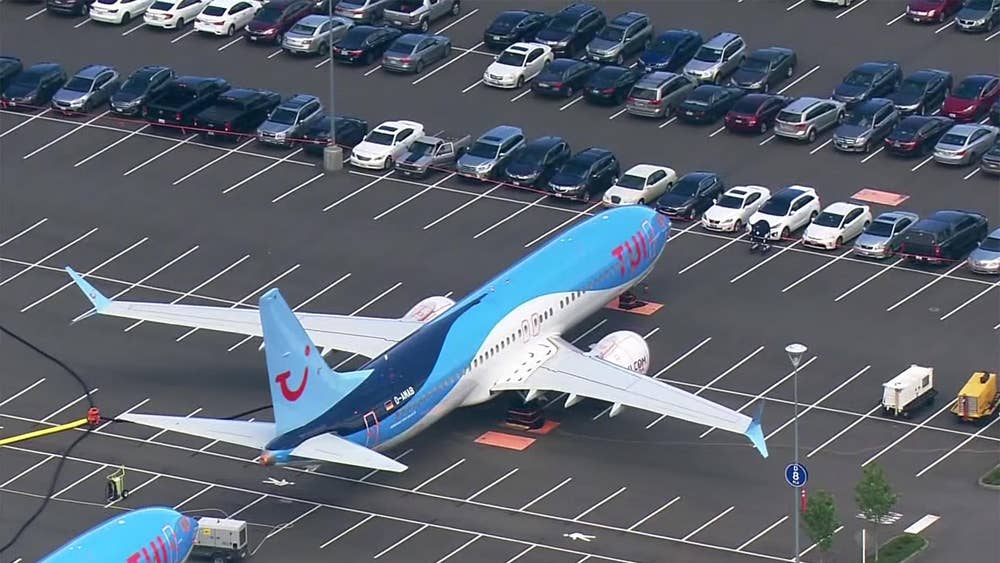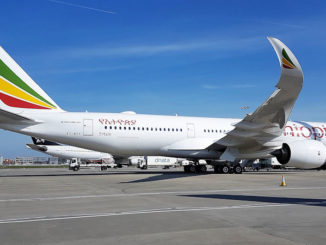Boeing’s 737 troubles have multiplied. The planemaker’s Max model is grounded worldwide after two fatal crashes – and now it has agreed to “retrofit” 7,000 older models of the aircraft to avoid a repeat of an inflight tragedy.
Southwest Airlines flight 1380 was en route from New York to Dallas on 17 April 2018.
While the Boeing 737-700 was climbing through 32,000 feet, a fan blade with an undetected crack broke off and hit the engine casing.
Accident investigators have concluded that the force of the impact caused part of the engine housing, known as the nacelle, to disintegrate. This is part of the structure of the aircraft, rather than the engine.
Debris punctured the skin of the aircraft adjacent to seat 14A, which “caused the window to depart the airplane” according to the National Transportation Safety Board(NTSB) report.
Boeing parks grounded 737 planes in employee car park: In pictures

As the cabin rapidly depressurised, the passenger in 14A, Jennifer Riordan, was partially sucked out of the window. Passengers and crew were able to drag her back, but she later died of her injuries.
The NTSB has concluded there is a potential structural vulnerability in the engine casing on all Boeing 737 “Next Generation” (NG) aircraft. These are the versions of the twin-jet with the suffix -600, -700, -800 and -900.
Southwest has over 700 of these aircraft, more than any other carrier. Ryanair is the biggest operator of the type in Europe; its entire fleet of over 450 aircraft comprises the 737-800.
To avoid any repeat of the fatal event, the safety board has urged a redesign of the structure.
The NTSB chair, Robert Sumwalt, said: “This accident demonstrates that a fan blade can fail and release differently than that observed during engine certification testing and accounted for in airframe structural analyses.
“The structural integrity of the engine nacelle components for various airframe and engine combinations needs to be ensured.”
Boeing has said it will make the necessary changes. In a statement, the planemaker said: “Boeing is working on the design enhancements to fully address the safety recommendation from the NTSB.
“That design change will be implemented in the existing NG fleet over the longer term.”
Boeing insists: “All 737 NGs are safe to continue operating normally as the issue is completely mitigated by the fan blade inspections.
“Our thoughts remain with the family and friends of Jennifer Riordan, who died from her injuries, with those who were hurt, and with all of those onboard.
“We are committed to doing our part in making sure an event like this never happens again.”
The report makes several other recommendations, mainly on events in the cabin that followed the depressurisation. Two passengers in row 14 were moved: one to a cabin crew jumpseat, the other to the rear galley where they sat on the floor.
As the plane made an emergency landing at Philadelphia airport, all the cabin crew were out of position.
“Although the flight attendants were aware of the imminent landing, none was in her assigned jumpseat in preparation for the landing,” the report says.
“The flight attendants should have been properly restrained in their assigned jumpseats in case an emergency evacuation after landing was necessary.”
It calls on the Federal Aviation Administration to publish guidance “for reseating passengers if an inflight loss of seating capacity were to occur”.
None of the report’s conclusions affects the Boeing 737 Max. The planemaker is seeking approval for changes to the flawed anti-stall system involved in fatal accidents that killed a total of 346 people.
–
independent.co.uk



